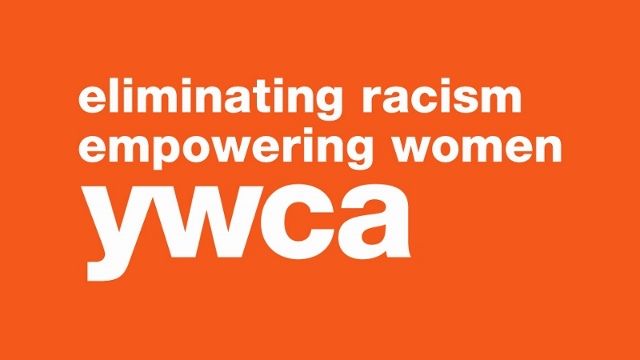What does Domestic Violence look like?
Domestic violence is a pattern of abusive behavior and coercive control that can happen in a dating, marital, or live-in intimate partner relationship. In an abusive relationship, one partner tries to maintain control over the other by using physical, psychological, verbal, economic, and/or sexual violence. Although factors such as drug and alcohol use, stress, or a family history of abuse may contribute to the problem, domestic violence is primarily an issue of power and control.
Domestic violence looks different in every relationship. An abuser may use a number of violent tactics to hurt and control their partner:
- Physical: Hitting; kicking; pushing; slapping; choking/strangling; punching; biting; refusing to help/withholding treatment when their partner is sick, injured, or pregnant; interfering with their partner’s basic needs (food, sleep); attacking with weapons; destroying personal property; stalking their partner
- Psychological: Making light of the abuse; shifting responsibility for abusive behavior; constant jealousy and control; verbal attacks or humiliation; playing mind games/gaslighting; harassing the victim about affairs the abusive partner imagines them to be having; isolating their partner from friends/family; intimidation/threats; excessive criticism; using race, age, sexual identity, immigration status, class, appearance, religion, HIV status, etc. against their partner
- Economic: keeping their partner from working; not allowing their partner access to family income; refusing to work and making their partner support the family; ruining their partner’s credit rating
- Sexual: pressuring their partner to engage in sexual activity when they don’t want to; forcing their partner to engage in sexual activity without prophylaxis (condoms, birth control, etc.)
How prevalent is Domestic Violence?
- 1 in 4 women and 1 in 7 men have experienced severe physical violence from an intimate partner at some point in their lifetime. (source)
- 1 in 15 children are exposed to intimate partner violence each year, and 90% of these children are eyewitnesses to this violence. (source)
- Nearly half of all women and men in the United States have experienced psychological aggression by an intimate partner in their lifetime (49.4% and 45.1%, respectively). (source)
- In a 24-hour survey, the National Network to End Domestic Violence found that U.S. domestic violence programs served 79,335 victims and answered more than 23,332 crisis hotline calls in one day alone. (source)
Why do abusers choose to abuse?
Domestic violence and abuse stem from a desire to gain and maintain power and control over an intimate partner. Abusive people believe they have the right to control and restrict their partners, and they may enjoy the feeling that exerting power gives them. They often believe that their own feelings and needs should be the priority in their relationships, so they use abusive tactics to dismantle equality and make their partners feel less valuable and deserving of respect in the relationship.
No matter why it happens, abuse is not okay and it’s never justified.
Abuse is a choice, and it’s not one that anyone has to make. Many people who experience or witness abuse growing up decide not to use those negative and hurtful ways of behaving in their own relationships. While outside forces such as drug or alcohol addiction can sometimes escalate abuse, it’s most important to recognize that these issues do not cause abuse.
Who is affected by domestic violence?
"Domestic violence is what we can an 'equal-opportunity employer.' It can and does happen to anyone, regardless of socio-economic status, religion, gender, race, or sexual orientation. If you want to see the 'face of domestic violence,' all you need to do is look around you."
-Nancy Salomone, Founder and CEO The Business of Me
Domestic violence doesn’t discriminate and occurs across all socioeconomic and cultural backgrounds. Domestic violence can occur in any type of relationship including dating relationships and same-sex relationships. Victims may be any age, gender, or sex. However, there are some communities and populations that experience unique challenges and inequities.
Can men be victims of domestic violence?
While the majority of victims of domestic violence are women, men can also be victims. Domestic violence occurs in all different groups and populations and men are no exception. 1 in 7 males have been victims of severe physical violence by an intimate partner in the United States in their lifetime (source). In addition to the general power and control dynamics that exist in any abusive relationship, there are many reasons why male-identified individuals don’t disclose or seek support, including:
- Fear of not being believed (especially if the abuser is female);
- Thinking that services aren’t available to men;
- The association between masculinity and domestic violence (being seen as weak or as “less of” a man).
Why would someone return to or stay in an abusive relationship?
This is one of the most frequently asked questions about domestic violence, and the answer is complicated. Abusers work hard to maintain power and control over a victim, and therefore they work hard to ensure that victims stay.
There are many reasons a person might stay in an abusive relationship:
- Fear: Abusers create a dynamic in which fear is very much present. The most dangerous time for a victim in an abusive relationship is when they are leaving a relationship or shortly thereafter. There is a much higher risk of death or serious bodily injury at the time when a victim leaves. A victim may also afraid that the abuse will escalate if their abuser finds out that they are planning to leave.
- Children: Most battered parents make efforts which they think will protect their children, minimize further violence and mitigate the impact of living with domestic violence.
- Economic Dependence: Financial abuse is very common in abusive relationships and can create a dynamic in which a victim is financially dependent on the abuser. Without access to money, resources and sometimes even without the ability to work, it may be incredibly difficult, or even feel impossible, to leave.
- Cultural/Societal/Religious Beliefs and Values: There could be ideas or beliefs present in a person’s community that would place a lot of shame on a person if they leave a relationship. Traditional gender roles or family values could influence or pressure a person to stay in a relationship or make the relationship work.
- Love/Emotional Connection to the Abuser: It may take a while for abuse to become present in a relationship. Even after abuse occurs, the victim may continue to see the charming, caring person that they fell in love with and still care for. There is a hope that the abuser will change.
- Isolation: Oftentimes, the abuser has physically and/or emotionally isolated the victim from their family, friends, and support system. When the victim is ready to leave, they may feel like they have nowhere to go or no one to help them. They may feel trapped and that they have no other options.
How can I help someone in an abusive relationship?
If you know someone who may be in an abusive relationship:
- Be aware that the person might not want to or be ready to talk about what is happening in their relationship.
- Be supportive and listen to the person. If they discuss some “red flags,” gently let them know that you’re concerned. Avoid phrases like, “You need to leave!”
- Let them know that you will be there to support them, no matter what happens in their relationship. Even if nothing changes or the person doesn’t take action, it is helpful for them to know they have a support system when they’re ready.
If someone you know has disclosed to you that they are in an abusive relationship:
- Listen and let the person guide the conversation. Don’t press for information; instead, allow them to disclose at their own pace. This may be the first time they have felt safe to talk about what’s happening to them, and it may be difficult to share their story.
- Validate their feelings. Let them know that whatever they are feeling is “normal”- anger, fear, confusion, or even feeling neutral- and it’s safe to express those feelings.
- Let the person know that what they are experiencing is not their fault. Sometimes, victims feel that they should have acted sooner or that it’s too late for help. Let them know that it’s never too late and that help is available. Everyone deserves to be in relationships that make them feel safe, respected and happy.
- Guide the person to the hotlines and resources
- Let the person know that you believe them!




